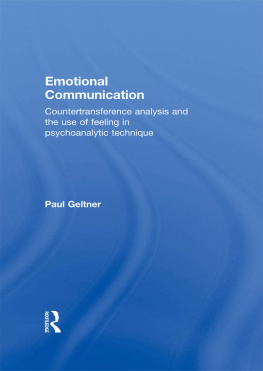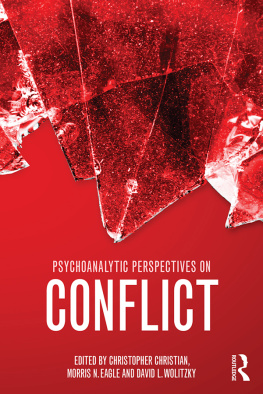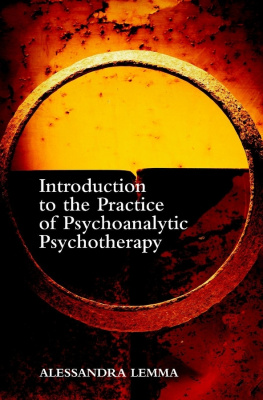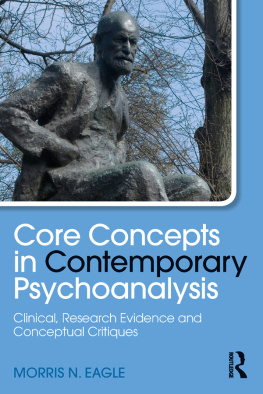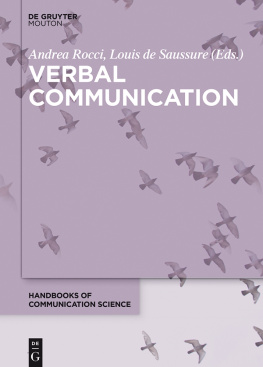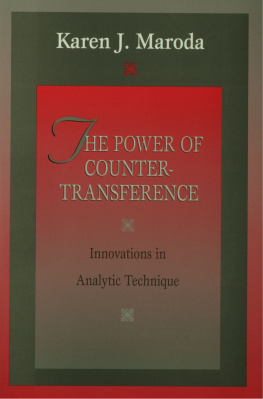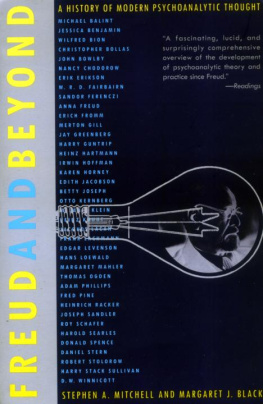Paul Geltner - Emotional Communication: Countertransference analysis and the use of feeling in psychoanalytic technique
Here you can read online Paul Geltner - Emotional Communication: Countertransference analysis and the use of feeling in psychoanalytic technique full text of the book (entire story) in english for free. Download pdf and epub, get meaning, cover and reviews about this ebook. year: 2012, publisher: Routledge, genre: Home and family. Description of the work, (preface) as well as reviews are available. Best literature library LitArk.com created for fans of good reading and offers a wide selection of genres:
Romance novel
Science fiction
Adventure
Detective
Science
History
Home and family
Prose
Art
Politics
Computer
Non-fiction
Religion
Business
Children
Humor
Choose a favorite category and find really read worthwhile books. Enjoy immersion in the world of imagination, feel the emotions of the characters or learn something new for yourself, make an fascinating discovery.
- Book:Emotional Communication: Countertransference analysis and the use of feeling in psychoanalytic technique
- Author:
- Publisher:Routledge
- Genre:
- Year:2012
- Rating:4 / 5
- Favourites:Add to favourites
- Your mark:
Emotional Communication: Countertransference analysis and the use of feeling in psychoanalytic technique: summary, description and annotation
We offer to read an annotation, description, summary or preface (depends on what the author of the book "Emotional Communication: Countertransference analysis and the use of feeling in psychoanalytic technique" wrote himself). If you haven't found the necessary information about the book — write in the comments, we will try to find it.
What role does animal like and infantile communication play in life and in psychoanalysis? How are painful childhood experiences recreated with people who are nothing like the original family? What are the roles of loving and horrible feelings in psychoanalytic cure?
In Emotional Communication, Paul Geltner places the pre-linguistic type of communication that is shared with infants and animals at the core of the psychoanalytic relationship. He shows how emotional communication intertwines with language, permeating every moment of human interaction, and becoming a primary way that people involuntarily recreate painful childhood relationships in current life.
Emotional Communication integrates observations from a number of psychoanalytic schools in a cohesive but non-eclectic model. Geltner expands psychoanalytic technique beyond the traditional focus on interpretation and the contemporary focus on authenticity to include the use feelings that precisely address the clients repetitive patterns of misery. The author breaks down analytic interventions into their cognitive and emotional components, describing how each engages a different part of the clients mind and serves a different function. He explains the role of emotional communication in psychoanalytic technique both in classical interpretations and in non-interpretive interventions that use the analysts feelings to amplify the therapeutic power of the psychoanalytic relationship.
Offering a clear alternative to both Classical and contemporary Relational and Intersubjective approaches to understanding and treating clients in psychoanalysis, Paul Geltner presents a theory of communication and maturation that will interest psychoanalysts, psychotherapists, and those concerned with the subtleties of human relatedness.
Paul Geltner: author's other books
Who wrote Emotional Communication: Countertransference analysis and the use of feeling in psychoanalytic technique? Find out the surname, the name of the author of the book and a list of all author's works by series.

